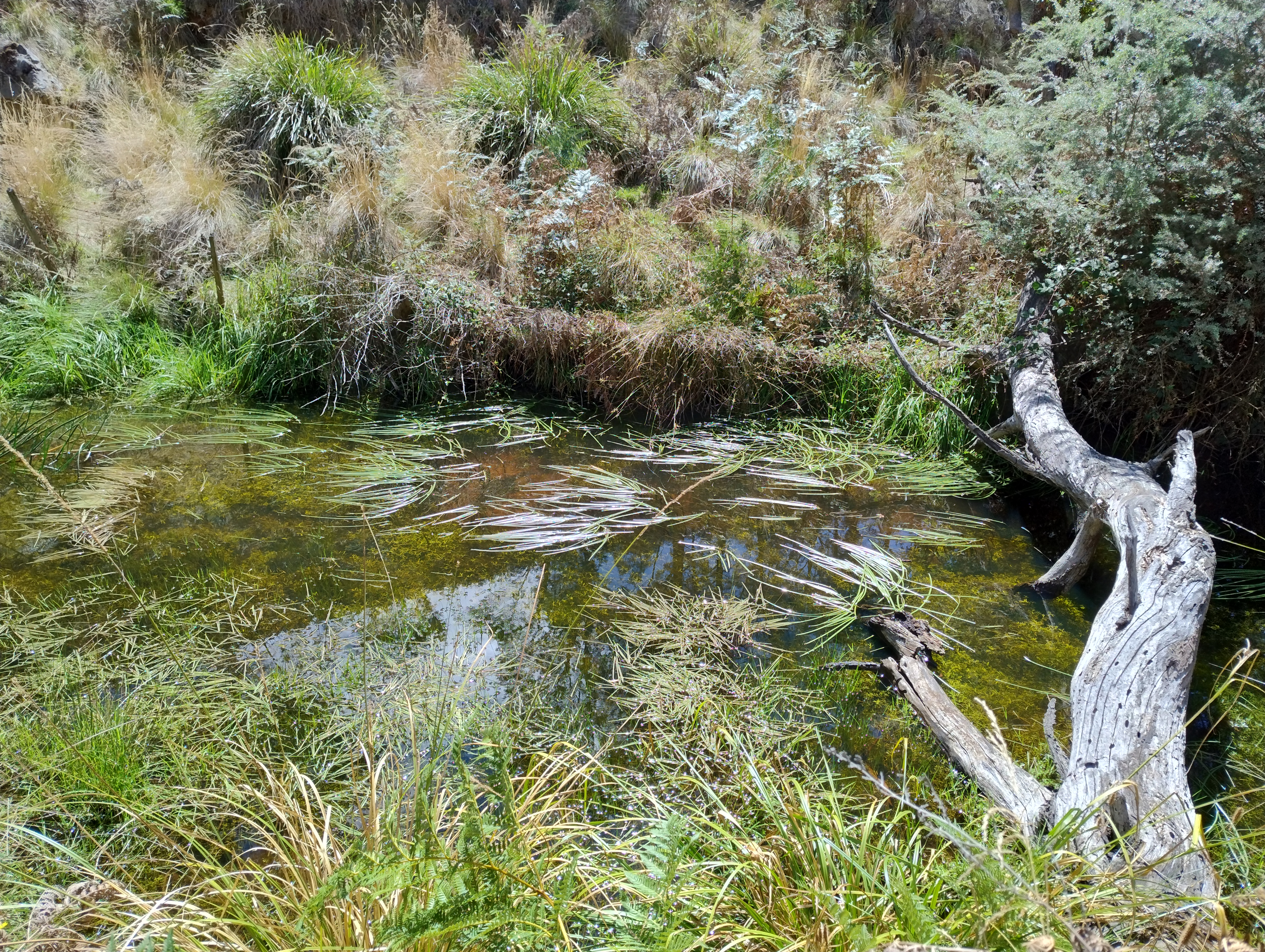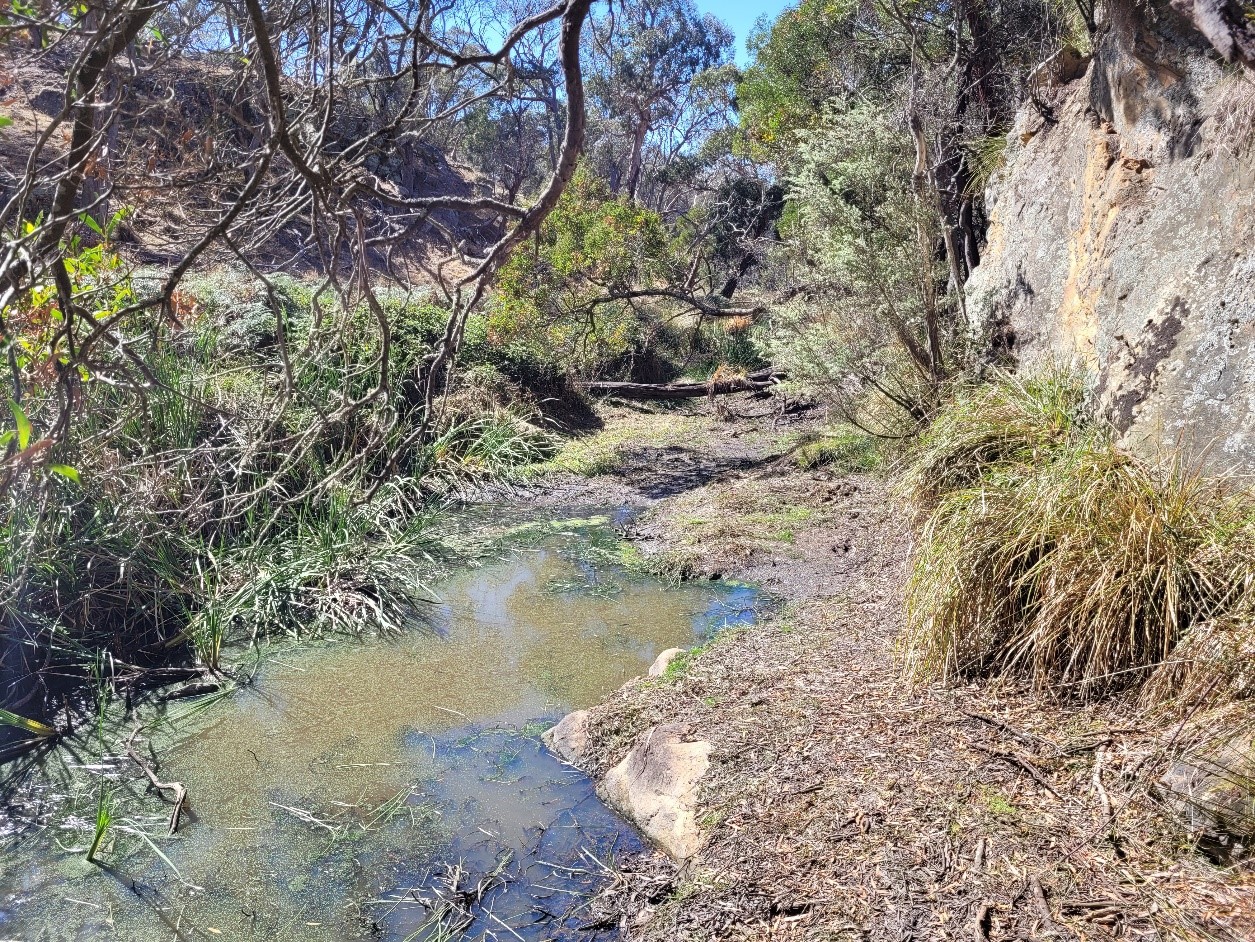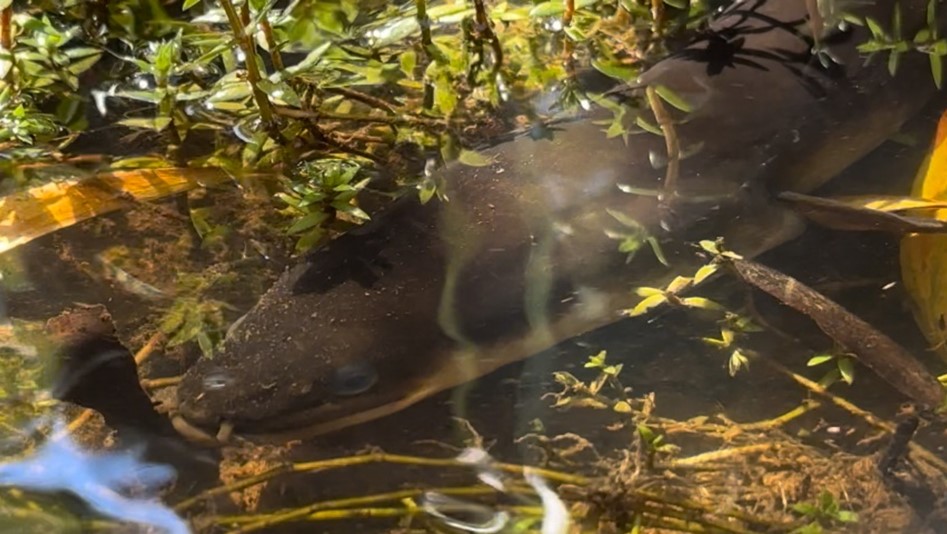In short
|

Moorabool Yaluk East Branch during a flow , photo by Matilda Foerster
Moorabool River East Branch
The Moorabool Yaluk (Moorabool River) in southwestern Victoria is a culturally significant river to Wadawurrung People. The river has been heavily altered by regulation through the construction of reservoirs and weirs, as well as water extraction. Since the 1950s, water has been diverted from a short section of the east branch by the Bostock Reservoir. This has changed the flow regime, subsequently altering the plant and animal community along the river. Until 2024, this section of the river was only sustained by groundwater and rainfall.
The Wadawurrung Traditional Owners Aboriginal Corporation (WTOAC) own and manage this area of the Moorabool Yaluk. WTOAC are trialling managed flows to restore this section of Moorabool Yaluk towards its pre-alteration state, increasing its ecological and cultural values.

Moorabool River in dry conditions prior to the flow in January 2025
What we are doing
ARI is assessing the response of the Moorabool Yaluk plant and animal community to these flows on behalf of WTOAC and DEECA. In 2024 and 2025, we did surveys at sites before and after water delivery, both upstream and downstream of the delivery site.
These looked at:
- Aquatic and riverbank vegetation cover and richness in survey plots
- Fish, eel and crayfish population size and health using electrofishing and crayfish burrow checks
- Frog activity before, during and after flows using audio monitoring of calls
- Water quality and invertebrate assessments by Australian Laboratory Services (ALS) and Corangamite Catchment Management Authority’s Citizen Science Program using WaterWatch Victoria’s assessment methods.
This survey work was funded for WTOAC by DEECA, as part of the Victorian Environmental Flow Monitoring and Assessment Program (VEFMAP).

ARI staff electrofishing in the Moorabool River March 2025, photo by Matilda Foerster
What we found
In our 2024 assessment, we found that:
- Overall, impacts of the flow on the plants and animals were minor. This was an expected result from the first flow and given the relatively high water level prior to the flow.
- During the flow, there were significant improvements in water quality, with up to 20% more oxygen in the water, and a lower salt content.
- Only two exotic species of fish were found, Common Carp and Tench.
- Common Galaxias and Short-finned Eels (both native) were the most abundant fish species.
- In forested sites within the WTOAC property and further downstream, there were more native than exotic plants, but in cleared sites this was reversed.
- Five frog species were identified, including the Victorian Smooth Froglet, which previously hadn’t been recorded in this area.
- Southern Brown Tree Frog calls peaked after the first flow releases.
- 24 bird species were recorded, including several that are water-dependent (e.g. Sacred Kingfishers and Pacific Black Ducks).
- We identified several species that are culturally significant for Wadawurrung People including buniya (Short-finned Eels) and polango/warngare (water ribbons) which are traditional food sources, toolim (pale rush) which is used for weaving and healing, and yarrabil/we-in-kalk (swamp gum) which is used as a food source and for making tools.
Pre-flow surveys in 2025 we found that:
- The drier conditions prior to the flow event meant that the river had receded back to a small number of shallow pools only.
- No fish were recorded in the small pools.
- Vegetation communities were shifting towards terrestrial species in the dry riverbed.
Next steps
ARI completed the post-flow assessments in March 2025. Once analysed, this monitoring will provide insights into the effect of multi-year managed flows in shaping the ecological and cultural outcomes for the Moorabool Yaluk.

Short-finned Eel, photo by Timothy D
Research impact
This research is supporting Wadawurrung Traditional Owners to make informed decisions about how they can best support and improve the Cultural and ecological values of Moorabool Yaluk. Once the 2025 flow assessments are completed, we will have a better understanding of the longer-term benefits managed water can provide, which will be important for future water allocations.
This project, along with our larger-scale environmental water monitoring projects across Victoria, is contributing to a better understanding of how our rivers and wetlands respond to environmental water delivery.
You can find out more about the broader monitoring programs by visiting our Victorian Environmental Flow Monitoring and Assessment Program (VEFMAP) or Wetland responses to environmental water webpages.
For more information contact research.ari@deeca.vic.gov.au or admin@wadawurrung.org.au
Page last updated: 28/05/25